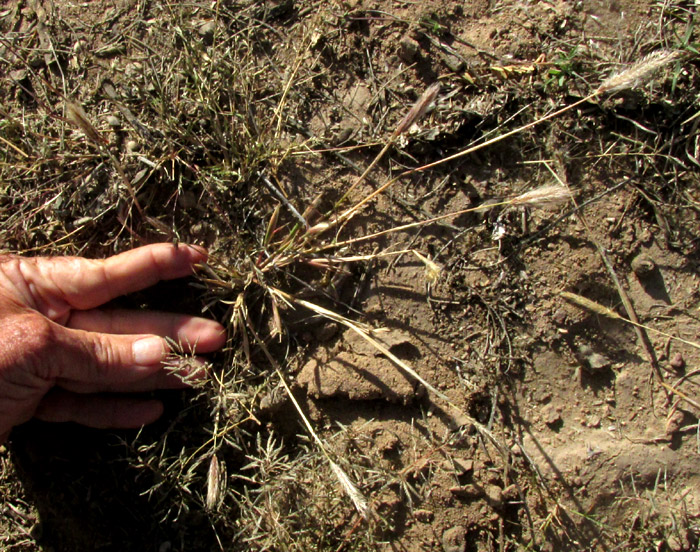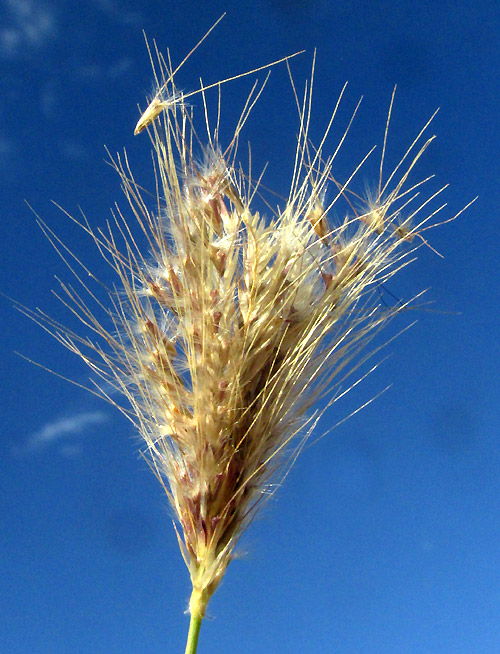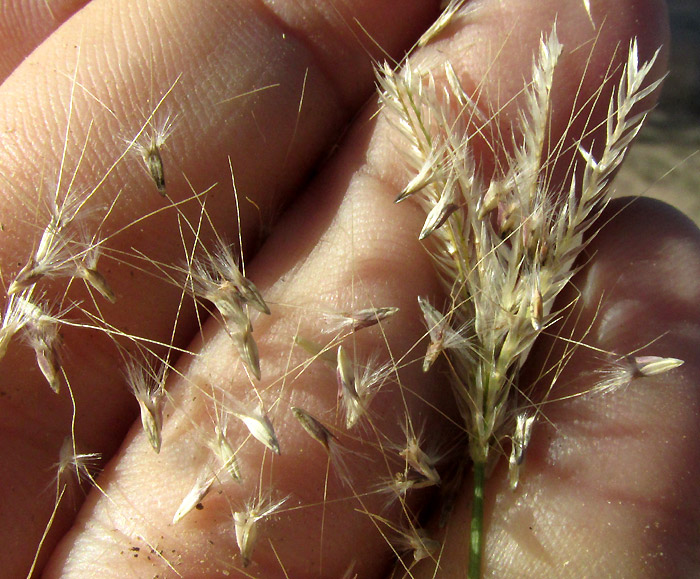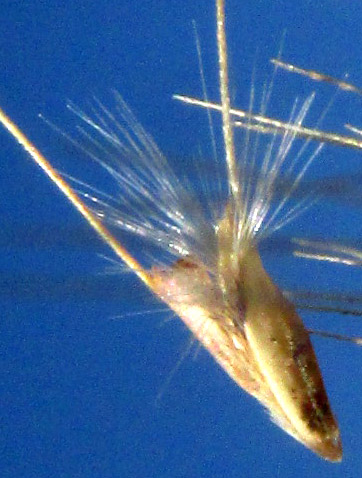Excerpts from Jim Conrad's
Naturalist Newsletter
Entry dated January 18, 2024, issued from near Tequisquiapan; elevation about 1,900m, (6200 ft), ~N20.57°, ~W99.89°; Querétaro state, MÉXICO
FEATHER FINGERGRASS

During a severe two-year drought, the town's reservoir was completely dry. The above grass grew in its silty-powdery bed where in normal times water would be standing. What caught my attention was that this grass's fruiting heads atop their peduncles radiated outward from the rooting base. I thought the species might be specially adapted to areas heavily grazed by herbivores, which was the case here with wandering flocks of sheep; growing low to the ground makes it harder for herbivores to eat them.

Above, a fruiting head's several spike-like branches have been nudged apart so that it's easier to see how the branches all appear to arise from one point atop the peduncle. Such an arrangement is said to be "digitate," the slender branches radiating like fingers, or digits, from the hand's palm. That feature helps a great deal to narrow down which tribe of grasses this species belongs to, in this case the Cynodonteae. At this time that tribe embraces over 800 species. The famous Bermuda grass and Goosegrass, with this kind of inflorescence, belong in this tribe.

At this season our grass was busy disseminating its parachuting "seeds." Above, at the right, note that the spikelets' sharply pointed, scale-like glumes remain on inflorescence branches when the florets fall off. In the picture's center and left, note that each separate, loose unit bears two long, stiff bristles.

Closer up, it's seen that each unit consists of two distinct parts. One part is a fertile floret with its scale-like lemma enveloping a one-seeded, caryopsis-type fruit, while the other smaller unit is a sterile floret. Each floret's scale-like lemma tip bears a stiff bristle, and each lemma's margins develop conspicuous, white tufts of hairs. These hairs are about the length of the lemmas themselves, but not as long as the terminal bristles.
All the above features bring us to a fairly commonly occurring, usually weedy species known variously as Feather Fingergrass, Feather Windmillgrass, Feathery Rhodes-grass and other such names; it's CHLORIS VIRGATA.
Chloris virgata is a widespread species occurring in many habitats, especially disturbed ones, in many places. It's native from about the southern half of the US south through our area to Argentina in South America, plus it's invasive in much of the rest of the world except the cooler parts. Despite the growth form of our plant in the dried-up reservoir, normally it stands upright, though it's known to spread out and even root at stem nodes touching the ground. The Internet shows many pictures of this species growing larger and with more spectacularly feathery heads. This is a flexible, adaptive, tough species poised to gain even more territory with global change and increasing desertification.
One aspect of its adaptability is that the plant is an annual with wind-disseminated seeds. It's one of the first grass species to colonize newly devegetated ground. In Kenya it's been used for reseeding denuded rangeland and other highly disturbed areas in arid and semiarid regions.
In East Africa, the leaves of Chloris virgata are soaked in water and applied to wounds to prevent infection. In South Africa, it's sown to control erosion on fragile soils.